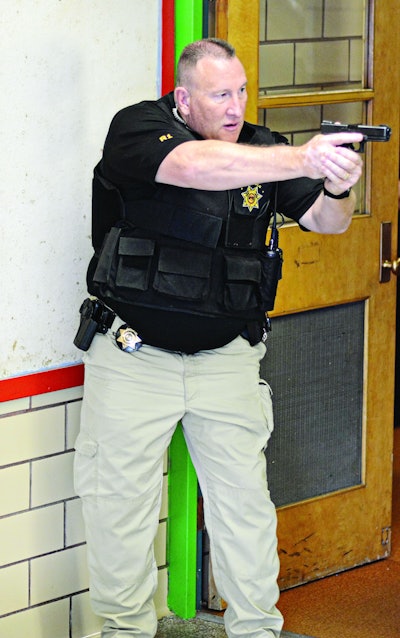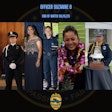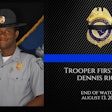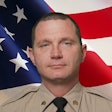 As with any tactical situation, generally those who preplan the best, win. Photos produced at the Frank DeAngelis Center for Community Safety in Jefferson County, CO, by Dennis Pleuss of Jeffco Public Schools
As with any tactical situation, generally those who preplan the best, win. Photos produced at the Frank DeAngelis Center for Community Safety in Jefferson County, CO, by Dennis Pleuss of Jeffco Public Schools
In April 1999 Americans watched in horror as students smashed windows and jumped out of their Littleton, CO, high school in panicked efforts to escape two of their murderous classmates. As the nightmare wore on, reports of dozens of dead and injured students and faculty were beamed into our living rooms through the media. Those reports painted a startling picture of evil, as we learned the massacre was rehearsed, premeditated, and tactically planned to ensure the highest possible body count. The law enforcement community was now faced with a troubling new evolution of students murdering students and puzzled as to how to most effectively engage the active killer.
Professional tactical police trainers across the country quickly came to a consensus that the traditional response model of surround, contain, and call out SWAT or other tactical units, was a useless one as these killings are over and done in a matter of minutes, well before an average SWAT response time. So the Rapid Deployment response was created, modified, and cemented as the national best practice for law enforcement when dealing with active shooter incidents.
The initial Rapid Deployment mindset focused on a four-officer contact team, each with delineated responsibilities and disciplines, working as a singular unit when entering a hostile environment. However in recent years, law enforcement agencies have seen bloody rampage killings with high casualties resulting within minutes of the first shot. So the response model has become even more aggressive and proactive. Proactive agencies and officers now focus on a solo-officer response to such a grave threat, with the realization that the sooner an officer inserts into such an incident, the sooner the dynamics shift for the murderer and the potential victims.
This dire challenge for law enforcement officers represents a sober reality of contemporary policing in America. As officers we have to ask ourselves: Could I really do that? How will I respond if I'm the first one there? Will I survive? Can I save lives? Will my training guide me? Questions such as these are normal when faced with such a dangerous task, and must be proactively addressed before the moment of truth on the worst possible day.
 As officers nationwide are trained and expected to voluntarily run into these ongoing massacres, we can never become disillusioned that there is some guarantee we won't be injured or worse. Photos produced at the Frank DeAngelis Center for Community Safety in Jefferson County, CO, by Dennis Pleuss of Jeffco Public Schools
As officers nationwide are trained and expected to voluntarily run into these ongoing massacres, we can never become disillusioned that there is some guarantee we won't be injured or worse. Photos produced at the Frank DeAngelis Center for Community Safety in Jefferson County, CO, by Dennis Pleuss of Jeffco Public Schools
The greatest challenge for law enforcement first responders is how to most effectively suppress the intrinsic priority of self-preservation. Within all typical humans is a desire to live on, to be safe, and to shield oneself from danger. As 21st century American law enforcement officers, we must train ourselves to stifle that urge.
It has always been a common statement within law enforcement hallways and lineups that our greatest priority and number one goal is that we "all get home safely to our families." At first glance that seems noble and sensible. No officer enters a shift wishing to never see their loved ones again. However, when faced with the darkness and evil of rampage-style killings, that mindset cannot exist within the modern law enforcement ethos.
We are devoted, trained, some would say even called, to valorously perform an inherently dangerous job to protect and serve those who fall within our jurisdictions. Our own individual self-preservation, though certainly important, can never be our highest priority. While I work through the night, should my home be invaded and my family put in danger, the thought of an officer responding whose highest aim is his own safety and survival is utterly offensive. Should a society ever employ a majority of law enforcement officers whose main daily goal is their own security, that culture is doomed. As officers nationwide are trained and expected to voluntarily run into these ongoing massacres, we can never become disillusioned that there is some guarantee we won't be injured or worse.
What can be guaranteed is that when an armed, proactive officer is inserted into these rampage-style killings, the dynamics are immediately altered. Imagine the mindset of a homicidal student, hell-bent on murder and setting a new American active killing casualty record, as he stalks the hallways of his school. He is calm, as he has premeditated his assault, and effortlessly moves and shoots his peers without remorse or mercy. His stress level is low, as it is certain that he has the only firearms on the property. As screaming students dash about, he rounds a corner and is immediately faced with an armed police officer moving toward the sound of his gunfire. The tactical dynamics immediately shift. No longer is the killer solely a predator; he is now also prey.
Even if the killer has superior weaponry in contrast to the officer, such as rifle vs. service pistol, the balance of power has shifted. The juvenile murderer can no longer coolly stalk and target his innocent, unarmed classmates because his whole attention is now consumed with his possible demise. The mere fact of the officer's presence forces a decision. The officer being there has forever altered the dynamic. If the officer shoots the murderer, lives are saved. Should the officer be shot, he has bought precious seconds for other officers to flood into the school, and lives are saved. If the suspect commits suicide or runs and escapes, lives are saved. But no lives are saved by the officer's actions if his top priority is getting home to his family.
As with any tactical situation, generally those who preplan the best, win. Asking these intimate, individually personal questions of yourself and your fellow officers are necessary. When an officer finds himself in the midst of the chaos of the rampage-killing, it is not the moment to soul-search and determine his priorities and make solid choices. I greatly value and respect the thousands of selfless, stouthearted law enforcement officers who have asked themselves these questions and report to duty every day ready and willing to run toward the violence, even at their own peril. However, I equally honor and respect those former officers who have honestly determined they cannot rush into the chaos and now work honorably in the private sector. I firmly believe that a law enforcement officer who is trained and able to intervene in such a horrific incident and chooses not to cannot psychologically recover in this lifetime.
I no longer sit idly by when I overhear officers in conversation noting their greatest ambition is to "go home safely." I challenge them to think of what that simple statement, while first sounding innocuous and noble, entails. Life is truly precious, and few people recognize that fact as do law enforcement officers. But we are called, tasked, and trained to protect and to serve. Question yourself. Know yourself. Be prepared to move toward the threat and save lives.
Sgt. Kory Flowers is a 19-year veteran with the Greensboro (NC) Police Department. He trains law enforcement officers nationwide on leadership and tactical communication and is a frequent contributor to POLICE Magazine.
The photos accompanying this article were produced at the Frank DeAngelis Center for Community Safety in Jefferson County, CO, by Dennis Pleuss of Jeffco Public Schools. The DeAngelis Center is a facility used to train law enforcement and school personnel in active shooter response. The 34,000 square feet of this former elementary school has been converted into training areas where public safety personnel can train to respond to malls, churches, apartments, and theaters in addition to schools. To learn more about the DeAngelis Center, see POLICE March 2018 "Training Simulators: Going Beyond Shoot, Don't Shoot." (www.policemag.com/deangeliscenter)










